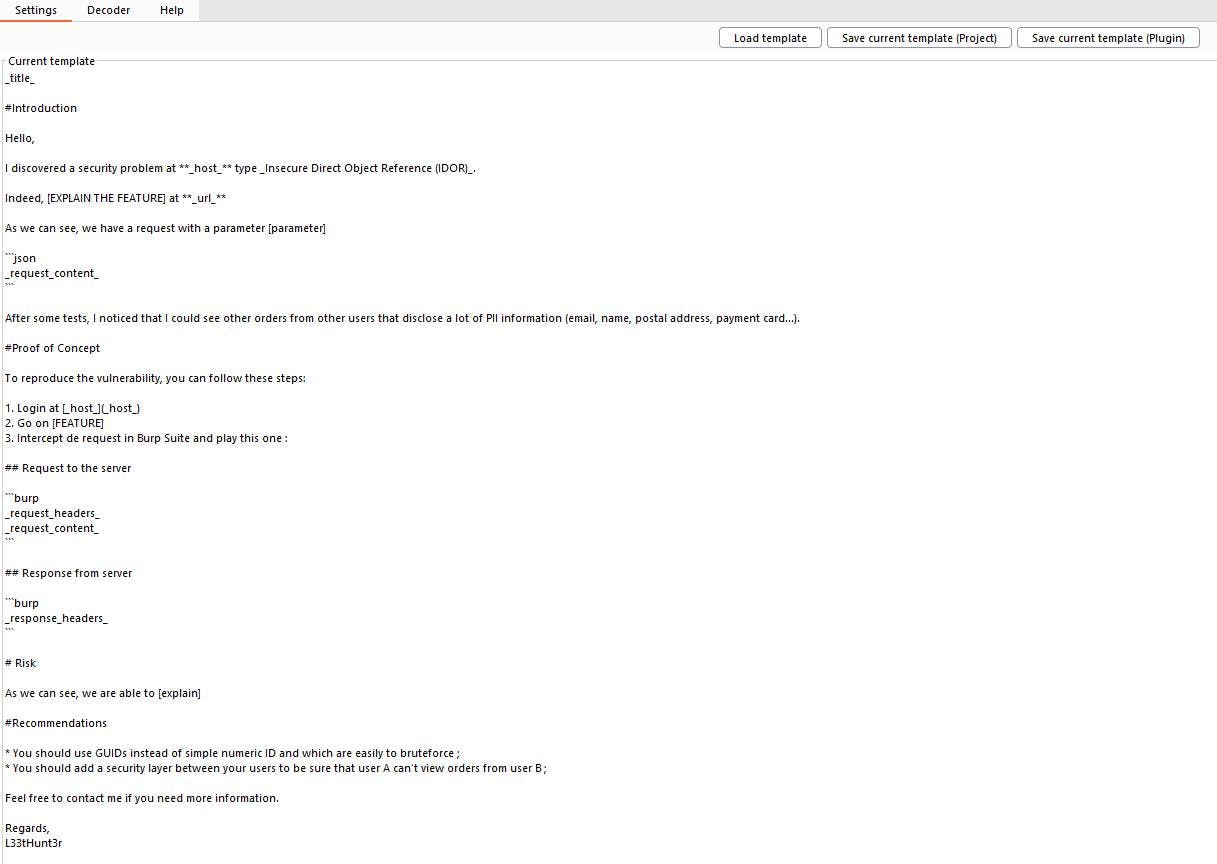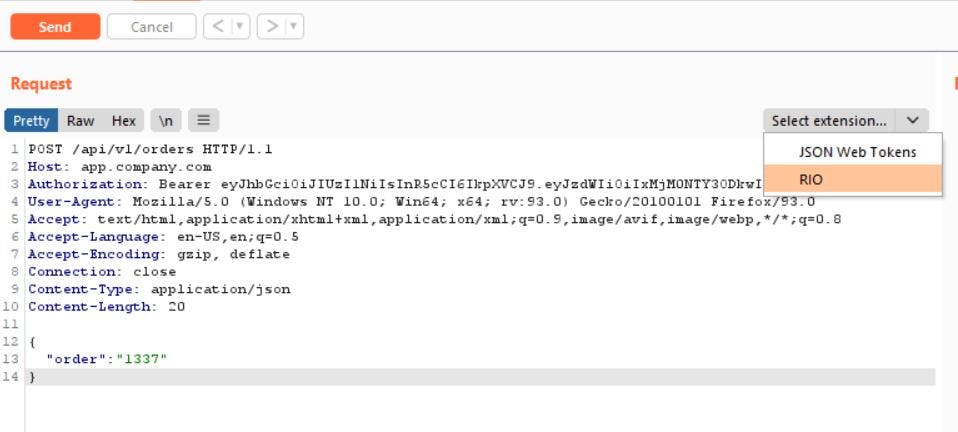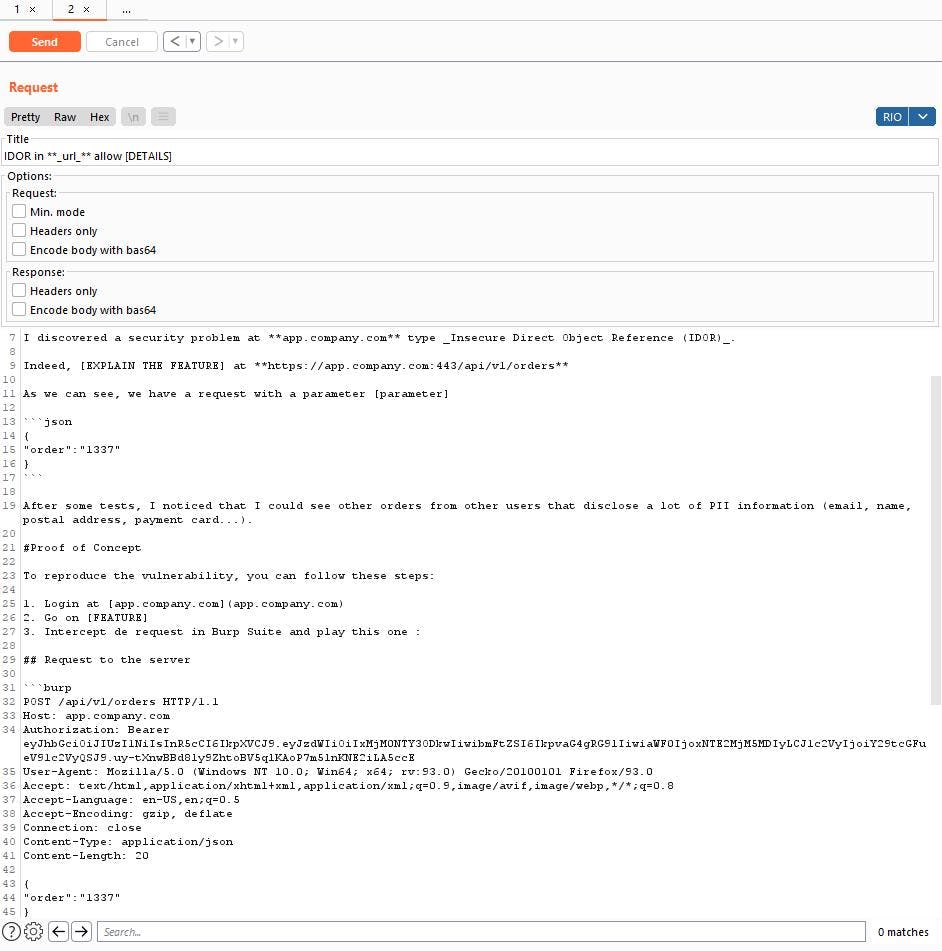Burp Suite is a great tool for bug bounty and general security testing. Given the wide range of available plugins, we have launched a series called “PimpMyBurp” to present our selection of Burp Suite extensions.
Yes, exploitation is a part of Bug hunting process, but redaction is probably the most important part. The report is the final stage which should reflect all the operational work that has taken place upstream: description of the context of the discovery, the endpoints, the requests and the Proof of Concept (PoC). We can automate a lot of things for recognition, but why can’t we do it for the writing part too? This is the question Daniel Kalinowski wanted to answer by developing his own extension called “RIO” for Burp Suite, which he released to the community a few days ago.
Create your report templates
First, you need to download the latest release of RIO directly from the GitHub repository. The file is a JAR, so once downloaded, you can add the plugin to Burp Suite by clicking on Extender > Extensions > Add. In the new window, select the file and at the end you should see a new tab called “RIO“.
The RIO extension has its own tab on Burp Suite
In this tab, you can edit & save your templates. In reality you could also use your favorite text editor to do it but you might as well do it directly in the plugin since it’s possible.
The template is in markdown. It is a convenient way to write reports and is used by all your favourite Bug Bounty platforms.
List of available keywords
The RIO extension supports many keywords, which allows you to adapt and create your own template in a complete way. For example, you can choose to display only the host, a specific header, a POST request, the parameters of the request… All the documentation on keywords is available here.
I strongly recommend that you prepare generic templates but also templates for XSS, IDOR, SSRF… and other “classic” vulnerabilities. This way, you will have the basic template to have the main structure of your report and you will only have to fill in the small details useful to the understanding of the report.
Template generation in RIOT extension on Repeater tab
Generate your reports
Your PoC is ready, so is your model… How about generating the report in the final format in markdown? To do this, just go to the Repeater tab and choose the query you want to demonstrate on your PoC. Click on Select extension… > RIO.
The RIO option on Repeater tab
You will then automatically see the template of your report pre-filled with all the elements you have indicated in the structure: host, urls, request, parameters, server response… :
Generating the final report with RIO
It’s beautiful, isn’t it? Now all you need to do is copy and paste this report into your favourite platform and fill in the strings between [brackets].
We hope you have discovered a new extension and that many of you will use it! Thanks again to Kalin! As always, don’t hesitate to send us a message on Twitter to suggest new extensions that we will be happy to test!



